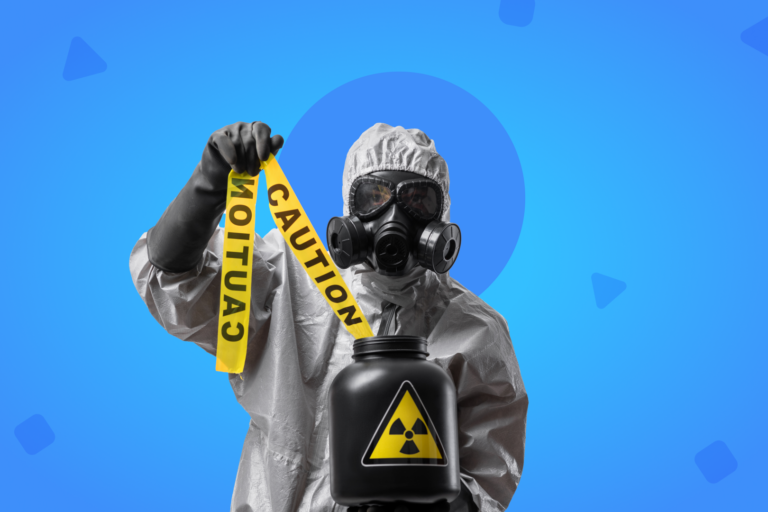Implementing, in a constant and regular way, an adequate fire extinguisher inspection is essential to prevent serious accidents and protect the lives of workers.
Although they tend to go unnoticed by the vast majority of people, portable fire extinguishers are the first line of defense against fires in businesses and offices. For this reason, and like all safety equipment, they must always be operational.
This condition can only be guaranteed if the personnel in charge of its maintenance have adequate inspection, review and test protocols.
Why implement a correct inspection?
Regular inspection of fire extinguishers is essential to any safety program, including both maintenance and testing of their operational capacity. This task may be carried out by an external specialized third party, or by the company’s own security team.
This importance stems from the certainty that more than 90% of fires in commercial properties can be extinguished quickly, if the same company personnel deal with it immediately using portable fire extinguishers.
Therefore, if there is a single defective extinguisher, both the company’s infrastructure and equipment, as well as the lives of its personnel, are at risk.
For this reason, it is essential that the team in charge, as well as the hygiene and safety supervisors, know how to carry out this inspection efficiently and effectively. This objective involves being aware of the most common problems that can be identified during an inspection and, at the same time, knowing how to solve them.
Frequency of inspections
As a general rule, fire extinguishers should be checked during its first installation and monthly thereafter. Additionally, this frequency can be adjusted according to the needs of each company, including the characteristics of the physical environment, or the nature of the activities carried out.
For example, an administrative services office, or an advertising agency, might require lower demands than a food factory, or a heavy manufacturing industry.
This implies to carry out much more frequent inspections, if the area where the extinguishers are stored represents a risk of damage to their components. This can be due to multiple factors such as the presence of acids, oxides, corrosive elements or environmental factors that accelerate the degradation of metals, among other possibilities.
How to perform quick and effective inspection?
Any monthly fire extinguisher inspection process must follow these key steps.
Check accessibility
First of all, it is necessary to verify if the fire extinguisher is easily visible by all the nearby personnel, and to verify that the access to it is not blocked by any other equipment or object. This aspect is crucial to respond quickly to an emergency.
Also, if the fire extinguishers are not wheeled, they must be secured in a specific place (for example, inside a glass cabinet without a key, or inside a wooden box), to prevent them from moving, falling or losing.
Examine the physical condition
The labeling, general condition and possible physical defects of the extinguisher must be verified in detail, according to the following guideline:
- Find the serial number and check if the extinguisher label is legible.
- Check if the cylinder and other external metal parts are free of corrosion, dents or other signs of damage.
- Check that the connection between hose and cylinder is secure.
- Inspect the presence of cracks in the hose, or leaks in the nozzle.
- Check if the locking pin goes through the holes in the flush lever and handle, and check if the pin is properly secured by the seal. We should remember that this pin locks the discharge lever, and prevents accidental discharges.
Check the condition of the pressure gauge
We should permanently examinate the position of the gauge needle. If it is within the green zone, everything is correct. If, on the contrary, it is located in the left red zone, it means that the extinguisher is undercharged and needs a recharge. In turn, if the needle is in the right red zone, it indicates a danger of overload.
Observe the inspection label
If the equipment has an inspection label. This should always indicate the presence of other regular inspections. If not, then it is wise to change the equipment.
Generate reports and recommend action plans
Once the inspection is complete, we need to summarize the observations and any eventual plan of action. In addition, the fire extinguisher inspection label must be signed indicating the name of the person in charge, his signature and date of inspection.
It is important to archive this inspection guide in an area accessible to all employees, so that it is easier to remember the steps to follow each time a new verification of the equipment status is carried out.
How to act in the face of faults or damage?
While it is important to regularly practice a proper and thorough inspection, it is also important to know the most common problems identified during this process, and how to fix them.
Some of these contingencies, and their respective solutions, are the following:
“The location of the fire extinguisher is obstructed”
Problem: We must pay attention to any cases where a portable fire extinguisher is “hidden” behind or under furniture, office equipment, doors, desks, or sinks.
Action: Obstructions should be removed immediately, or the extinguisher relocated where everyone can easily see it. It can be along a hallway, or near an entrance / exit. We also have to worry about installing it near clear and precise signage.
“Cylinder with dents and / or rust”
Problem: Since fire extinguishers are not used often, they can deteriorate due to the humid or corrosive environment, constant transfers, or accidental shocks. These physical defects can cause breakdowns and even explosions.
Action: The cylinder should be sent immediately to the manufacturer for replacement.
“Overcharged or undercharged fire extinguisher”
Problem: If the extinguisher has a good charge, it will have enough speed to control a fire start. In contrast, a lightly charged cylinder will be unable to extinguish the fire. In turn, if it is overloaded, it will leak or even explode, injuring those who handle it.
Action: The cylinder must be sent immediately to the manufacturer for replacement or refilling, as appropriate.
“Locking pin is missing or seal is broken”
Problem: The locking pins and seals are made of metal or plastic, and can disappear after a training exercise, a cleaning process, or during some unexpected manipulation. Both components should always go together, as they prevent accidentally pressing the lever, and releasing the contents of the extinguisher.
Action: If any of these parts are missing, we should obtain a replacement immediately. If it is not available, go to the nearest hardware store for a temporary replacement, until you get the final replacement from the manufacturer.
“Fire extinguisher very close to the ground”
Problem: A fire extinguisher placed directly on the floor can be accidentally struck by those in the workplace. This can cause more dents in the cylinder. Also, do not forget that the variable temperature of the floor can cause unexpected changes in the pressure of the extinguisher.
Action: Standard practice is to mount it on a wall, using metal brackets, at a height of 1.00 to 1.50 meters from the ground. Alternatively, wooden or steel supports can be used.
The contribution of technology
Well-trained security personnel can inspect up to 100 fire extinguishers per month in a business or office. However, this also involves writing a large number of post-inspection reports.
All that paperwork exponentially increases the likelihood of human error, which, in turn, translates into a greater risk that one or more fire extinguishers will not function properly when needed.
This risk can be eliminated through technological solutions or checklist-type applications. With their help, supervisors and security officers will be able to conduct inspections more efficiently. This will undoubtedly improve the ability to successfully fight a fire in the workplace.
This technological support allows:
- Carry out efficient inspections using a mobile device, and without paper.
- Attach photographic records to inspection reports, quickly and easily.
- Quickly escalate the problems detected, and assign the respective corrective actions, even before completing the inspection process itself.
- Generate complete visual reports and share them in real time with other users or supervisors.
- Save data to the cloud, and keep all previous reports and historical inspection templates safe.
Use our Fire Extinguishers checklist now and raise the safety standards of your company.






